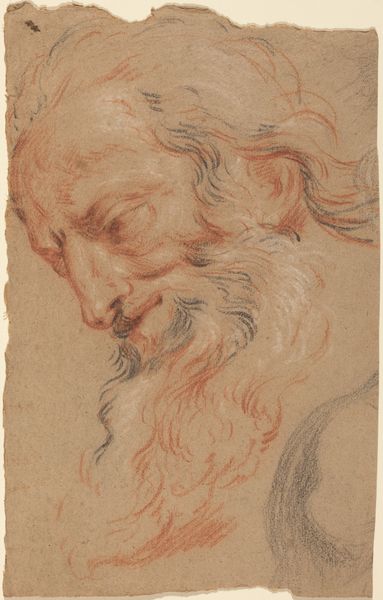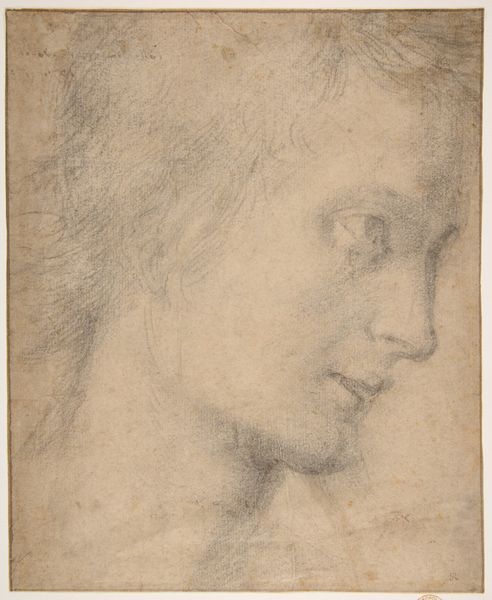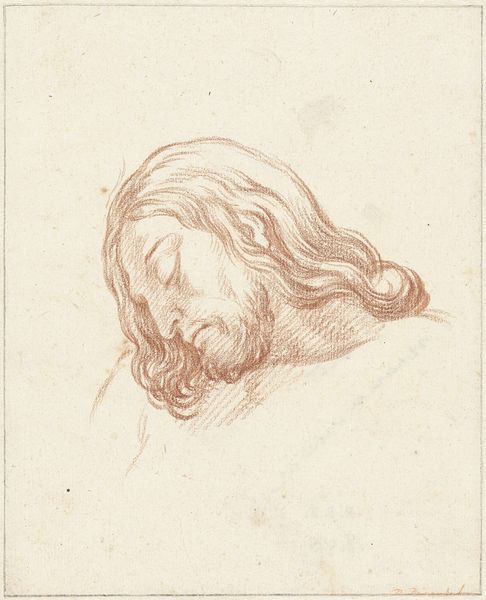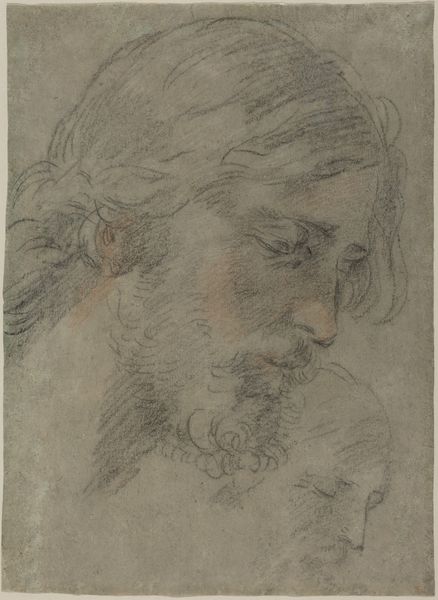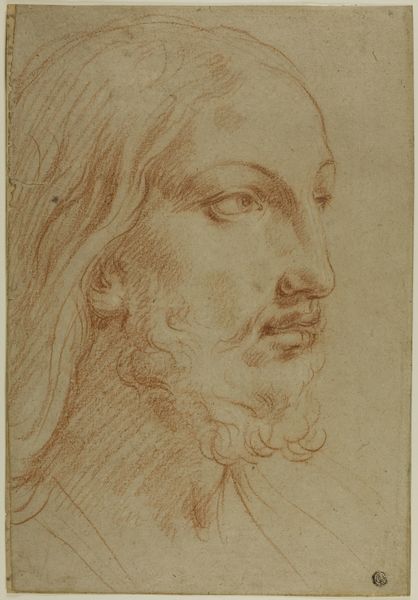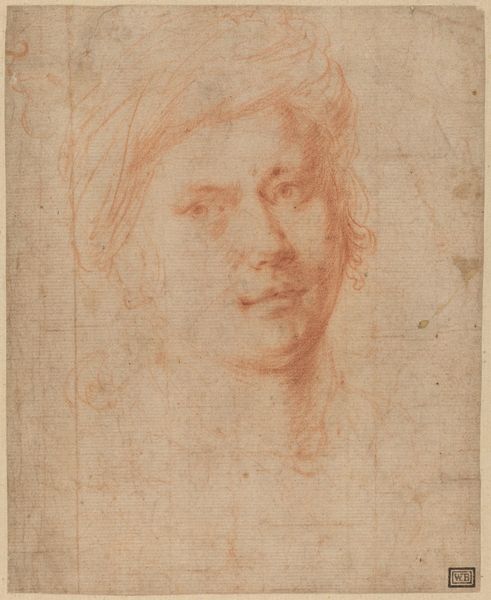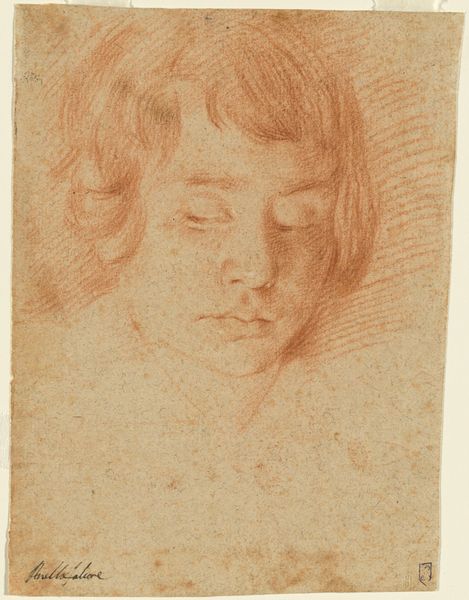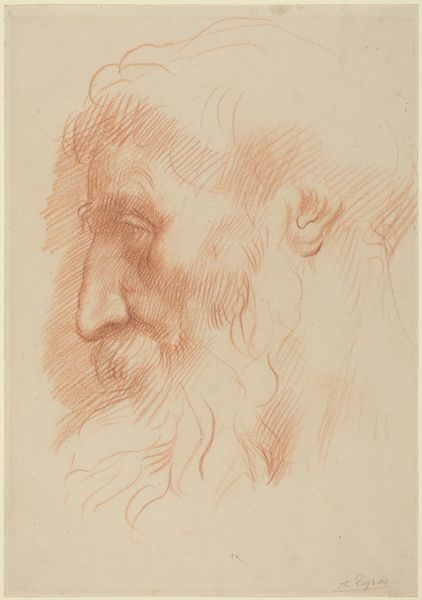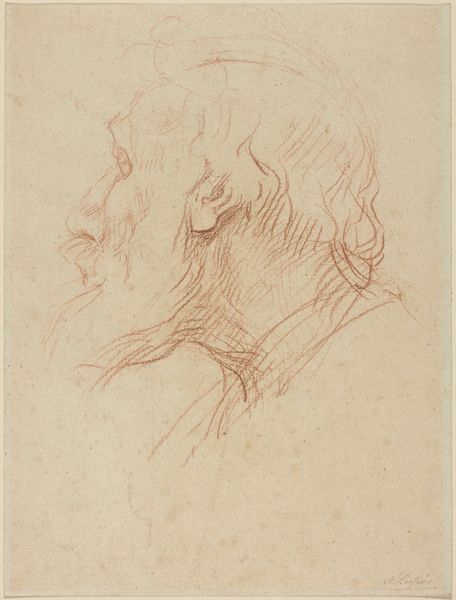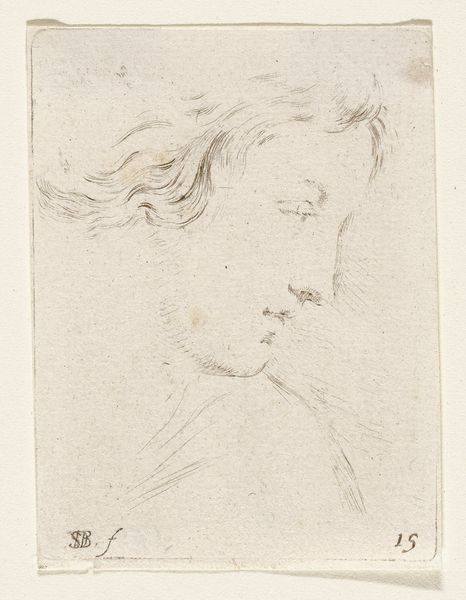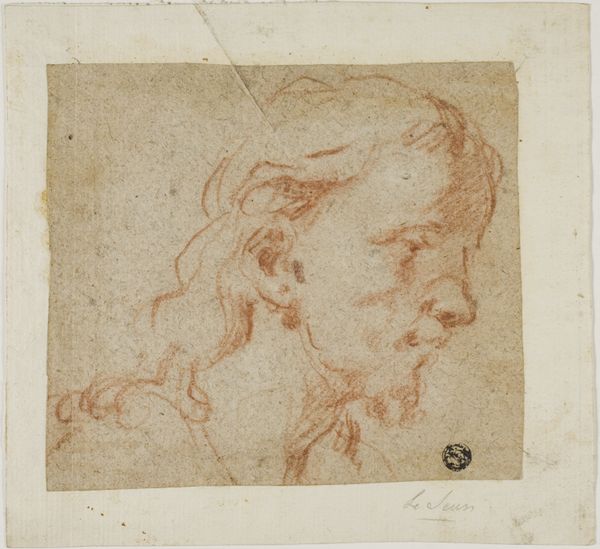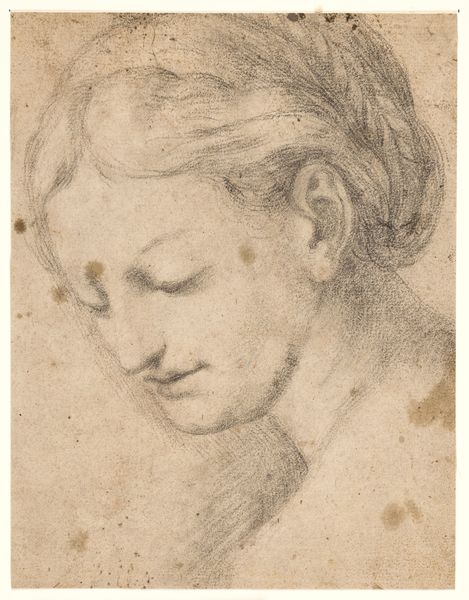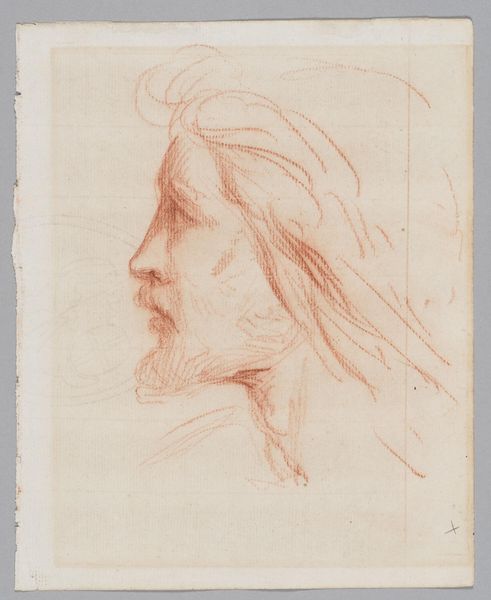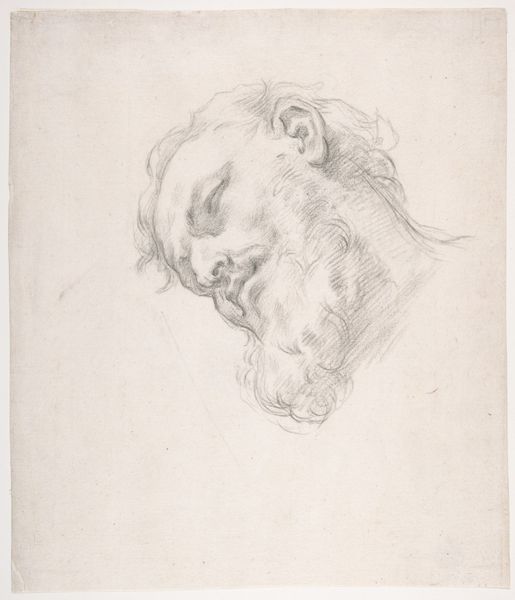
drawing, print, paper, chalk, graphite, charcoal
#
portrait
#
drawing
#
self-portrait
# print
#
charcoal drawing
#
paper
#
11_renaissance
#
chalk
#
graphite
#
portrait drawing
#
charcoal
#
italian-renaissance
Dimensions: 155 × 135 mm
Copyright: Public Domain
Editor: So, this is Antonio da Correggio's "Head of a Sleeping Man," a drawing of sorts, undated, made with graphite, chalk and charcoal on paper. I’m struck by how raw and immediate it feels. How would you interpret this work? Curator: Considering Correggio's methods here, it's fascinating how the layering of charcoal and chalk – readily available materials – produces such a nuanced depiction. We need to think about where the materials were sourced. Who prepared them? And the implications of using drawing as a primary tool during this period, it speaks volumes about artistic practice itself. Editor: You mean like, how drawing might've been perceived differently then? Curator: Precisely. Was this meant to be preparatory, or a finished work? The perceived ‘roughness’ of the materials challenges that dichotomy. How does that relate to the social standing of drawing compared to painting at the time? Furthermore, did Correggio create his own paper? How does this decision to work primarily with common materials affect how we understand his artistic intention and labor? Editor: So it’s about questioning the perceived hierarchy and the production itself. Curator: Exactly. We need to consider what the *means* of artistic creation reveal about the *meaning* of art itself. How does the relative affordability of chalk, charcoal, and paper impact who had access to artistic creation during the Renaissance, and whose stories are therefore told through art? The lines themselves betray a working out; corrections and refinements that belie both process and labor of art making. How does this effect your reading of the portrait? Editor: That gives me a completely new way to think about it. Looking at the physical materials and their historical context really opens up the meaning. Thank you! Curator: Absolutely! Examining material realities often exposes hidden dimensions within artwork and it challenges our conventional understanding.
Comments
No comments
Be the first to comment and join the conversation on the ultimate creative platform.
